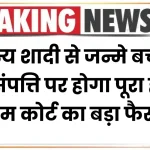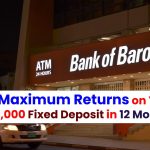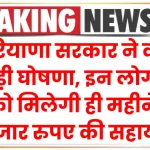
Fixed deposits (FDs) have long been a trusted investment option for those looking for stable returns and low risk. With current interest rates at a peak, this could be your last opportunity to lock in high FD rates before they start declining.
Last Chance to Get High Interest on Fixed Deposits
| Feature | Details |
|---|---|
| Current FD Interest Rates | Up to 8.5% for senior citizens, 7.9% for general investors |
| Best FD Tenures | 3 to 5 years for maximum returns |
| Tax Benefits | Tax-saving FDs offer deductions under Section 80C |
| Alternative Investments | Debt mutual funds, bonds, high-yield savings accounts |
| Risk Factor | Low risk with assured returns |
With high interest rates likely to drop, this is your last opportunity to lock in high returns on fixed deposits. By choosing the right tenure, leveraging tax-saving options, and implementing smart investment strategies, you can maximize your gains while keeping your money safe.
Why Now is the Best Time to Invest in Fixed Deposits?
Interest rates on fixed deposits have been rising over the past few years due to inflation control measures and economic policy changes. However, financial experts predict that these rates may drop soon as the economy stabilizes.
Locking in your investments now ensures you enjoy higher returns for years to come. For example, if you invest $10,000 in an FD at 8% annual interest, your amount will grow to $14,693 in 5 years—risk-free!
How to Choose the Best Fixed Deposit Plan?
Not all FDs offer the same returns. Here’s how to pick the best plan for your needs:
1. Compare Interest Rates
Banks and financial institutions offer varying interest rates. Senior citizens usually get an additional 0.5% boost.
- HDFC Bank: 7.5% for general investors, 8.0% for seniors
- SBI Bank: 7.9% for general investors, 8.4% for seniors
- ICICI Bank: 7.8% for general investors, 8.3% for seniors
2. Select the Right Tenure
Longer FDs (3-5 years) generally offer better interest rates than short-term ones. However, consider your liquidity needs before locking in funds.
3. Consider Cumulative vs. Non-Cumulative FDs
- Cumulative FDs reinvest interest, leading to higher final returns.
- Non-cumulative FDs pay interest monthly, quarterly, or yearly—ideal for retirees needing regular income.
4. Check for Penalty Clauses
Premature withdrawals may attract penalties of 1% lower interest. Ensure you pick an FD that aligns with your liquidity needs.
see also: SBI FD Scheme
Strategies to Maximize FD Returns
Even with high FD rates, smart investment strategies can enhance your gains:
1. Laddering Strategy
Invest in multiple FDs with different tenures. This helps in liquidity management and reinvestment flexibility. Example:
- $5,000 in a 1-year FD
- $5,000 in a 3-year FD
- $5,000 in a 5-year FD
This way, when one FD matures, you can reinvest at the latest interest rate.
2. Tax-Saving Fixed Deposits
Invest up to $1.5 lakh in tax-saving FDs under Section 80C of the Income Tax Act. These come with a 5-year lock-in but offer tax benefits.
3. Diversify with Debt Instruments
If you’re looking for low-risk alternatives, consider:
- Debt Mutual Funds (Higher liquidity, slightly better returns)
- Corporate Bonds (Better rates, but slightly higher risk)
- Recurring Deposits (RDs) (For disciplined monthly investments)
see also: Maximizing Your Returns with SBI’s 444 and 400-Day FD Schemes
Last Chance to Get High Interest on Fixed Deposits FAQs
1. Can I break my FD before maturity?
Yes, but banks may charge a penalty of 0.5% to 1% on the interest rate.
2. What is the minimum amount required for an FD?
Most banks require a minimum deposit of $500 to $1,000, depending on the institution.
3. How is FD interest taxed?
FD interest is fully taxable under your income tax slab. However, senior citizens can claim deductions up to $50,000 under Section 80TTB.
4. Are FDs safe?
Yes, bank FDs are insured up to ₹5 lakh ($6,000) by the Deposit Insurance and Credit Guarantee Corporation (DICGC).
5. How to invest in an FD online?
You can invest via net banking or by visiting your bank’s website. Digital FDs offer higher interest rates in some banks.











